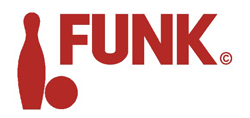faq
Answers to common questions we get from bowling businesses and future bowling center owners.
What’s the most expensive aspect about running a bowling business?
Given that the free-fall pinsetter results in so much required maintenance and the associated costs, many bowling businesses are turning to the string pinsetter. Widely used in Europe, the string pinsetter eliminates the need for a full-time mechanic and the majority of the repairs and maintenance can be conducted by any of your existing staff.
How profitable is a bowling business?
“A bowling center averaging 11,000 games per year generates about $36,750 per lane annually.”
How much space do I need for each bowling lane?
In terms of width, two lanes with an above ground ball return usually comes to aboue 11 feet and 7 inches (354 centimeters). For two lanes with an underground ball return, expect to dedicate 11 feet and 4 inches (345 centimeters).
How long is a bowling lane?
How wide is a bowling lane?
- 2 Lanes – 11’ 4” Wide
- 4 Lanes – 22’ 5-1/4” Wide
- 6 Lanes – 33’ 6-1/2” Wide
- 8 Lanes – 44’ 7-3/4” Wide
- 10 Lanes – 55’ 9” Wide
- 12 Lanes – 66’ 10-1/4” Wide
- 14 Lanes – 77’ 11-1/2” Wide
- 16 Lanes – 89’ 3/4” Wide
- 18 Lanes – 100’ 2” Wide
- 20 Lanes – 111’ 3-1/4” Wide
- 22 Lanes – 122’ 4-1/2” Wide
- 24 Lanes – 133’ 5-3/4” Wide
- 26 Lanes – 144’ 7” Wide
Here are the measurements for an above ground ball return:
- 2 Lanes – 11’ 7-1/2” Wide
- 4 Lanes – 23’ 1/4” Wide
- 6 Lanes – 34’ 5” Wide
- 8 Lanes – 45’ 9-3/4” Wide
- 10 Lanes – 57’ 2-1/2” Wide
- 12 Lanes – 68’ 7-1/2” Wide
- 14 Lanes – 80’ Wide
- 16 Lanes – 91’ 4-3/4” Wide
- 18 Lanes – 102’ 9-1/2” Wide
- 20 Lanes – 114’ 2-1/4” Wide
- 22 Lanes – 125’ 7” Wide
- 24 Lanes – 136’ 11-3/4” Wide
- 26 Lanes – 148’ 4-1/2” Wide
What material are bowling lanes made-of?
We offer various style and finish options to deliver a lane that will fit perfectly with the style of any bowling center. Additionally, we offer our customers the ability to customize lanes and approaches with logos and graphics via digital printing.
What is the process of building a bowling lane?
- Consulting: With our extensive experience with bowling centers and in-home installations all over to world we will help you to plan all technical, financial and organizational aspects of your bowling project.
- Production: We own every step of the production/manufacturing process and take pride in our craftsmanship. The actual production and manufacturing of your equipment will take place in our two production facilities in Germany. We also keep an extensive inventory of our products at our U.S. Headquarters in Detroit Michigan.
- Installation: Depending on the size of the center, the installation will likely take multiple weeks. Our international team of American and German engineers and craftsmen will come to your location and install everything from seating to pinsetters. The best product means nothing if it’s not installed properly! That’s why we do the installation ourselves.
- Training: As soon as all technical components are installed, we will train your staff on how to maintain and repair our equipment and technology. Unlike other pinsetters, the Funk String Pinsetter does NOT need an expert technician in order to maintain the machines.
- Service: Once you sign on with Funk, you are our partner. That means we are here to support your business however we can. We will be available to help you service your equipment either over the phone or on-site.
